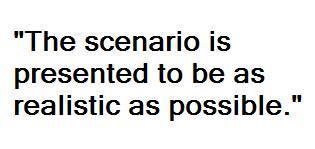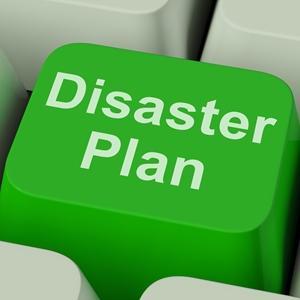Disasters come in a wide variety of forms including natural weather events, workplace violence, and cyberattacks. These situations often occur unexpectedly and come with heavy tolls for victims. In fact, more than 40 percent of organizations don't reopen after a disaster, according to the Federal Emergency Management Agency. A large part of this could be due to inadequate recovery strategies and prolonged downtime costs.
To avoid this situation, organizations are increasingly implementing business continuity plans to detail response and recovery processes to navigate and overcome emergencies. However, simply establishing a Business Continuity Plan might not be enough. A Tabletop Exercise can improve your planning in a number of ways:
1. Tests the plan for operational gaps
Many organizations take a "set it and forget it approach" to their Business Continuity Planning, meaning that once it's written, it's rarely revised. Businesses change significantly over time - a plan that might have worked last year might not be as effective now. Perhaps you added a new mission-critical system to your infrastructure or took on more staff members. On the other side, maybe your company restructured and scaled-down. These types of changes impact the plans in major ways, and if you haven't updated your BCP to cover them, it will be much more difficult to recover in a timely manner.

With a Tabletop Exercise, you can test out your BCP in a specific scenario to determine its effectiveness. The exercise might reveal that you don't have a process for restoring a critical business function or lack communications protocols that you rely on. Organizations must regularly take stock of essential systems and processes and revise the plan accordingly. This will help add in support for new assets and remove outdated services that may no longer be supported.
2. Identifies staff education gaps
Your Business Continuity Plan might be available for all to see, but does anyone really know what's in it? Organizational leaders might believe that they simply don't have the time to fully train employees on the plan or how to navigate various situations. However, this lack of awareness will cause additional chaos when an actual disaster occurs.
A Tabletop Exercise will not only provide an excellent opportunity for training staff members but also identify gaps in their understanding of the plan. For example, many employees might not fully understand what their roles or responsibilities would be during a particular scenario. The exercise encourages discussion and fleshes out obligations for each participant. What would they do if they spotted a cyberattack attempt? If a large number of workers were ill or unable to make it to the office, who would take control and how would tasks be delegated? Answering these questions within the exercise can increase staff awareness and maximize the effectiveness of your Business Continuity Plan.

3. Prepares you for the real thing
Above all, a Business Continuity Plan is meant to guide your staff members and your business through dire times. However, it can be difficult to know just how useful the plan will be until it's actually used. Waiting until a real emergency to try it out is a major mistake, due to incomplete staff understanding and potential operational gaps within the strategy itself. The question then, is how can the BCP be tested for a real-life scenario without the true danger of one?
Tabletop Exercises are the easy answer here. Each exercise addresses a specific scenario, covering the communication, response, and recovery skills that you want to test. The scenario presented should be as realistic as possible, with issues that are highly likely to occur. The benefits of a genuine scenario are twofold: First, employees are apt to participate in an exercise that could actually impact them, imparting critical knowledge to boost their capabilities. Second, the scenario could expose holes in the BCP and provide decision-makers with the knowledge to add or modify practices associated with specific events.
Disasters can strike at any time, and organizations will be banking on their Business Continuity Plan to guide them through these difficult situations. However, the BCP might not be as effective as it could be. A Tabletop Exercise can help improve all of your planning by expanding on processes for responding to specific scenarios, identifying operational gaps, and testing your staff's knowledge.
Tabletop Exercises from Attainium can be tailored to your business to address critical skills you want to learn. The exercise can be administered at your location by an Attainium moderator or conducted yourself. We support you every step of the way to design an exercise for your organization to improve your Business Continuity Planning. Contact us today to find out more about our Tabletop Exercises.


